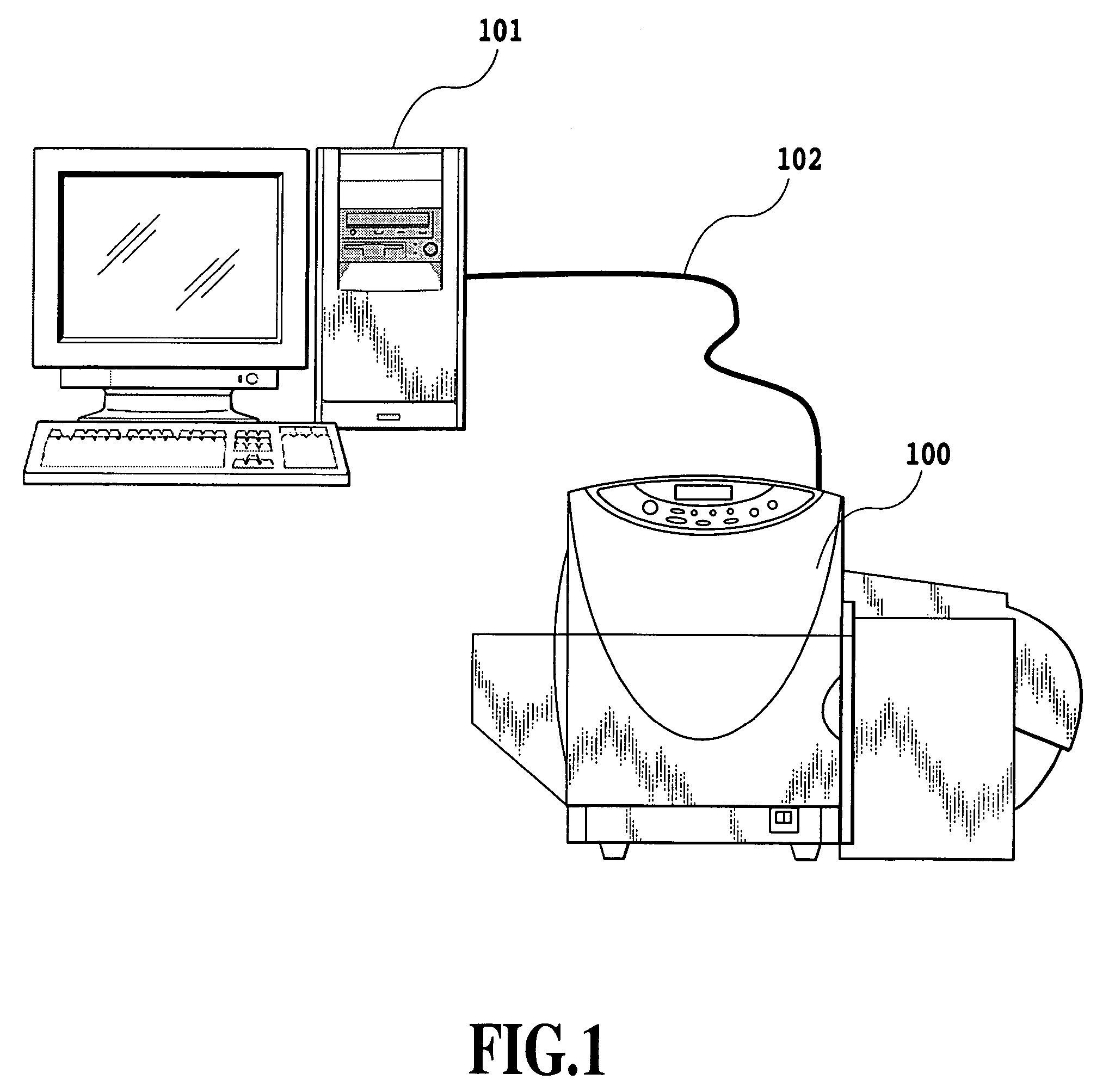Printing apparatus and image processing apparatus
a printing apparatus and print head technology, applied in the direction of printing, other printing apparatus, etc., can solve the problems of inability to perform normal printing operations of printing apparatus using ink ejecting print head, inability to maintain the print head, and inability to control the print head. , to achieve the effect of preventing degradation in throughput, improving management accuracy, and efficient management of information
- Summary
- Abstract
- Description
- Claims
- Application Information
AI Technical Summary
Benefits of technology
Problems solved by technology
Method used
Image
Examples
first embodiment
[0036]FIG. 1 shows a system configuration in which a printing apparatus of this embodiment is connected to a host computer.
[0037]The printing apparatus 100 is connected to a host computer (host device) 101 as an information processing apparatus through a cable 102. The host computer 101 outputs print data and dot count information on each block of a standard print image as a control command to the printing apparatus 100 through the cable 102. The host computer 101 receives status information (e.g., error information) as a control command and notifies the status of the printing apparatus 100 to the user.
[0038]FIG. 2 shows an outline configuration of the printing apparatus 100 of this embodiment.
[0039]The printing apparatus 100 in this example can print an image on a continuous label sheet (print medium) 210. Denoted 205 is a roll unit in which is installed a continuous label sheet 210 which has labels lightly stuck to a base sheet thereof. The roll unit 205 supplies the continuous la...
second embodiment
[0066]In the first embodiment, the present invention has been applied to the printing apparatus capable of performing a 4-color printing. This invention, however, is not limited to such a printing apparatus but may be applied to other types of printing apparatus, such as one mounting a plurality of single-color print heads. In that case, the dot count to be added to the head service life management data need only be divided by the number of print heads.
[0067]FIG. 10 shows an outline configuration of a printing system in which a printing apparatus 1000 using a plurality of single-color print heads is connected with a host computer 101.
[0068]The printing apparatus 1000 of this embodiment is a monochromatic ink jet printing apparatus using four elongate print heads (line heads), each print head extending over an entire width of a print area of a print medium 1006. The printing apparatus 1000 is connected with the host computer 101 through a printer cable 102 and prints an image accordi...
PUM
 Login to View More
Login to View More Abstract
Description
Claims
Application Information
 Login to View More
Login to View More - R&D
- Intellectual Property
- Life Sciences
- Materials
- Tech Scout
- Unparalleled Data Quality
- Higher Quality Content
- 60% Fewer Hallucinations
Browse by: Latest US Patents, China's latest patents, Technical Efficacy Thesaurus, Application Domain, Technology Topic, Popular Technical Reports.
© 2025 PatSnap. All rights reserved.Legal|Privacy policy|Modern Slavery Act Transparency Statement|Sitemap|About US| Contact US: help@patsnap.com



